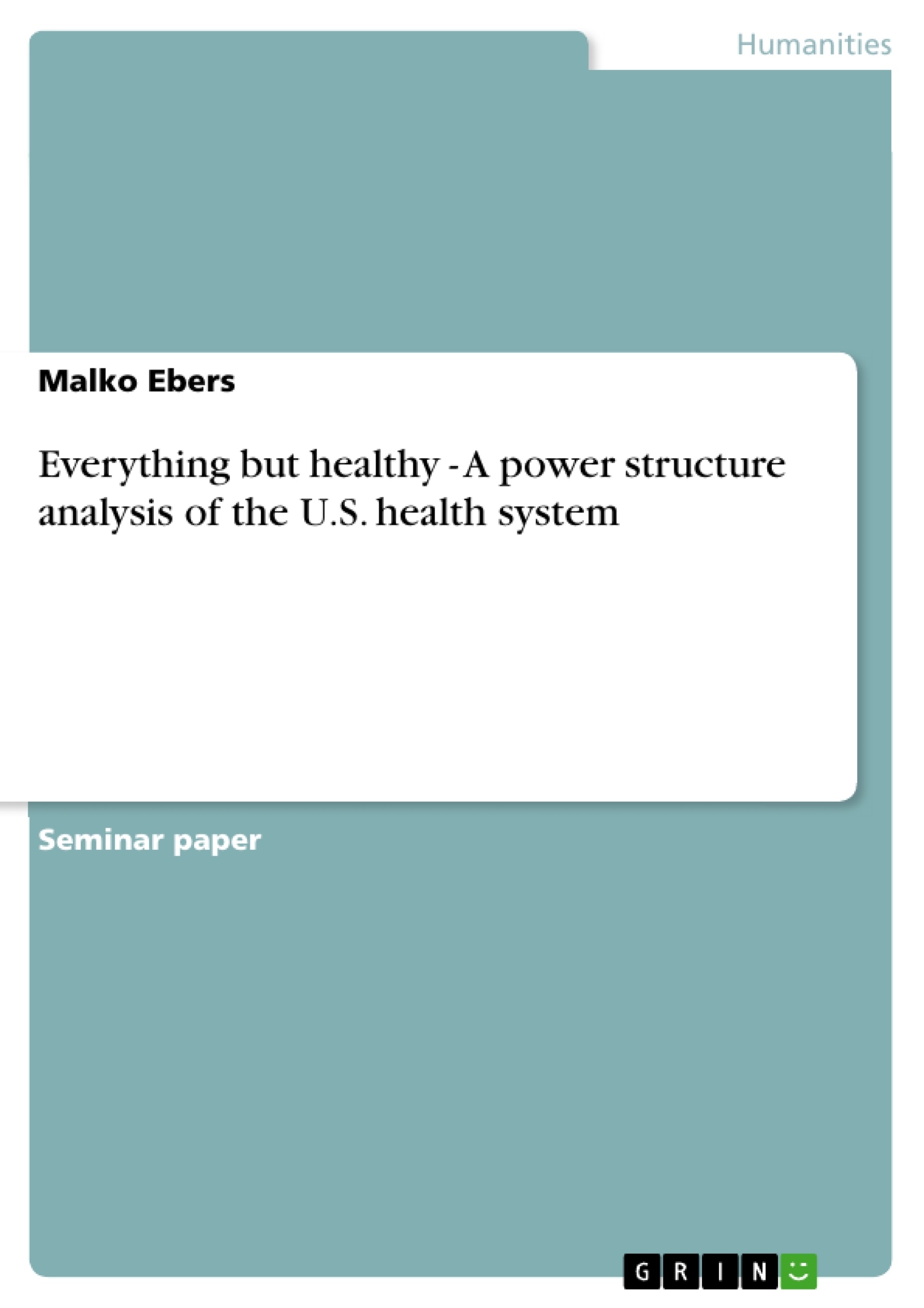How could it be that the most powerful and richest nation in the world, the United States is discussing about the same failures of the health care system for decades? How a good health care system might look like and what challenges are to be overcome are additional questions this paper seeks to answer.
This paper asks why the US has still not achieved a high quality medical service standard at low costs reaching all citizens, even though there were several attempts for a major structural reform over the last decades.
The hypothesis guiding this paper is therefore that due to power structures and lobbying the U.S. health system has low efficacy (coverage of all citizens in a fair way) and low efficiency (the relation between costs and outcome).
To answer this question one has to put it into context. Since there is an ongoing discussion with ups and downs for more than 70 years the question that comes up first is, how this peculiarity of the US case is possible? What might be the path-dependency that explains why: “The United States is the only western industrialized nation that fails to provide universal coverage and the only nation where health care for the majority of the population is financed by for-profit, minimally regulated private insurance companies.”(Quadango ) This paper argues that the failures of the U.S. health care system, being debated continuously over decades can’t be explained just by referring to “American Exceptionalism”, a culture and history that favours free market regulation. Though this and other popular explanations might play a role, this paper argues that power structures in U.S. society and specifically in the health care sector better explain the current system.
Inhaltsverzeichnis (Table of Contents)
- Introduction
- Background
- An old agenda: National Health Insurance
- What makes a good health system?
- The current Situation
- The best or just the most expensive system?
- A cross-country Comparison
- The policy-planning network: Power Structures in the US Health Sector
- Myths of the US health sector
- American Exceptionalism
- -The people want it this way?
- Isn't everything getting more expensive?
- American Exceptionalism
- Channels of Influence. Big Pharma in Washington
- Myths of the US health sector
- Conclusion
Zielsetzung und Themenschwerpunkte (Objectives and Key Themes)
This paper aims to analyze the power structures within the U.S. health sector and their impact on the nation's health system. It specifically explores why the U.S., despite being a wealthy nation, struggles to achieve universal healthcare coverage and efficient cost management.
- The history and evolution of the U.S. health system, including its unique characteristics.
- The comparative analysis of the U.S. health system with other industrialized nations.
- The influence of power structures in the health sector, such as Big Pharma and the role of lobbyists.
- The exploration of myths surrounding the U.S. health system, particularly the notion of "American Exceptionalism."
- The investigation of the factors contributing to the inefficiency and lack of universal coverage within the U.S. health system.
Zusammenfassung der Kapitel (Chapter Summaries)
The paper begins by introducing the U.S. health system and its historical context, highlighting the persistence of the issue of providing adequate healthcare to all citizens. It emphasizes the three key criteria for a successful healthcare system: quality, affordability, and accessibility. The paper sets forth the hypothesis that the U.S. health system suffers from low efficacy (coverage) and efficiency (cost-effectiveness).
The following chapter delves into the background of the U.S. health system, contrasting it with other industrialized countries. It examines the unique path-dependency of the U.S. system, exploring why it differs from models found in countries like Germany, Sweden, the UK, and Canada. The aim is not to provide a comprehensive historical analysis but to highlight key differences.
The subsequent section focuses on the current situation of the U.S. health system, addressing the question of whether it represents the best or simply the most expensive model. It presents a cross-country comparison, offering insights into the system's efficiency and quality relative to other nations.
Chapter four examines the power structures at play within the U.S. health sector, debunking common myths like "American Exceptionalism" and the idea that rising costs are inevitable. It further explores the influence of powerful institutions like pharmaceutical companies and their lobbying efforts in Washington.
Schlüsselwörter (Keywords)
The paper delves into the U.S. health system, power structures, social control, health care policy, American Exceptionalism, healthcare financing, cost-effectiveness, universal coverage, path-dependency, and comparative analysis. It specifically investigates the influence of Big Pharma, lobbying efforts, and the role of institutions in shaping the current health system.
- Quote paper
- Malko Ebers (Author), 2005, Everything but healthy - A power structure analysis of the U.S. health system, Munich, GRIN Verlag, https://www.grin.com/document/52634



